Verbascum thapsus, the great mullein, greater mullein or common mullein is a plant native to Europe, northern Africa, and Asia. Today, several species of mullein dominate landscapes throughout the Americas and Australia as well as their native range.
Mullein plants have assisted humans for thousands of years, not just as medicinal herbs, but as beneficial resources in many ways.
Ancient Romans coated the flowering stalks with tallow and used them as torches, while early American colonists used crushed mullein seeds as a fish poison. During the Renaissance, thick, soft leaves were used to line shoes, and when the leaves were rubbed against the face, it became a substitute for rouge.
It is thought that the Puritans brought mullein seeds to America for their medicinal herb gardens. By the late 1630s, mullein had escaped to neighboring fields and roadsides, and was quickly adopted by native American tribes.
Some medicine people were said to have their patient inhale smoke from a fire that mullein had been thrown on. It was also thought to be effective when “smoked”, therefore, became a popular ingredient in Kinnikinnick pipe smoke mix.

Description
Common mullein is tall (to 2.4 m (8 ft)) with a strong stem and few or no branches. Leaves are smaller toward the top, giving the whole plant a tapered appear-ance; leaves alternate and leaf bases continue down the stem, making the stem look four-winged or angled. The entire plant is woolly with soft hairs.
Mullein is biennial, reproducing by seed. During the first year, it produces a rosette up to 0.75 m (2.5 ft) diam; the stem follows in the succeeding growing season. Though mullein species are grown occasionally in flower gardens for the startling appearance of their long flowering spikes, their flowers tend to open one at a time or in small groups and are short-lived; this insures effective pollination by bees but gives a ragged appearance during flowering. Mullein also may produce spikes in unpredictable strange, twisted forms another detriment for dedicated gardeners.
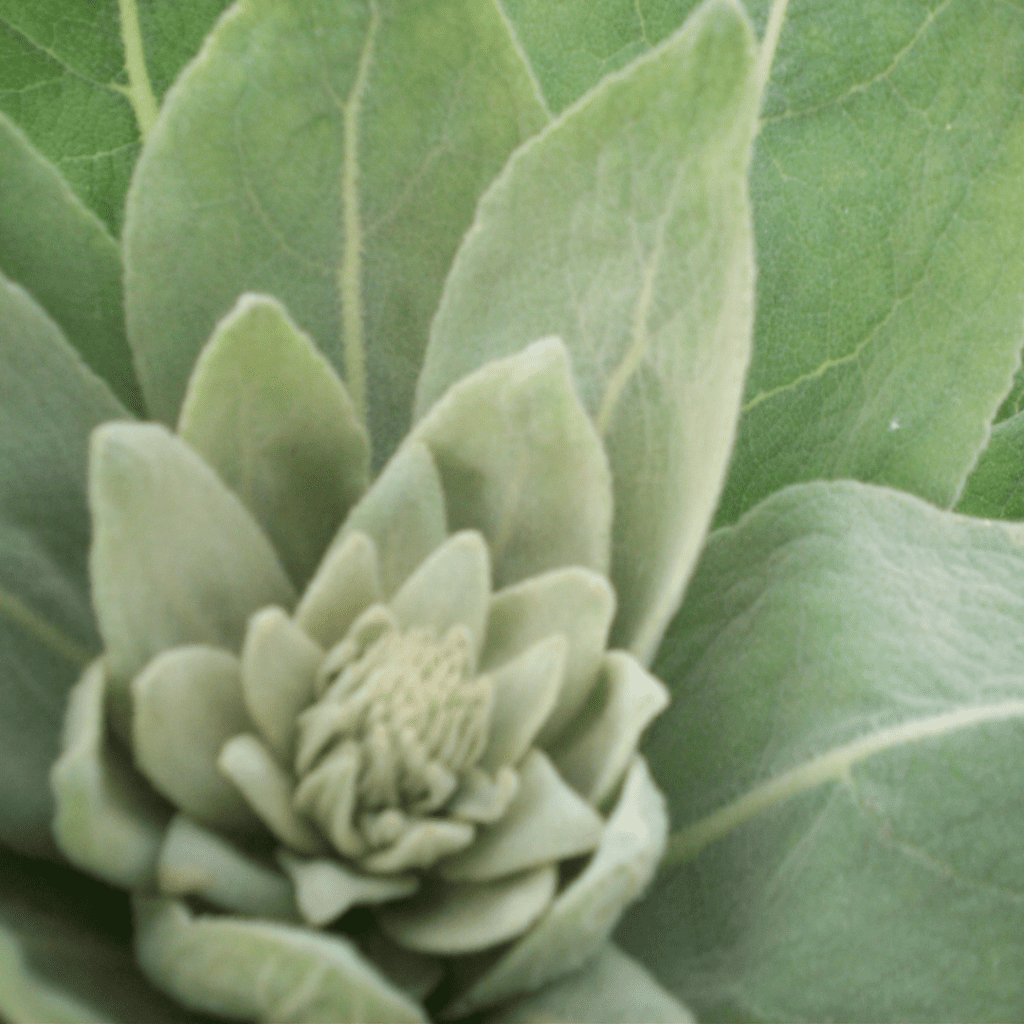
Mullein Benefits
Respiratory Support: Mullein is most well Known for supporting the respiratory system. It is believed to combat respiratory ailments such as cold, cough, bronchitis, asthma, COPD, and relief from sore throat. The antibacterial properties of mullein may also help treat inflammation and infection of the respiratory tract.
Mullein possesses expectorant, mucolytic, and demulcent properties that promote sputum secretion. This reduces cough, helps with the clearance of mucus from the airways, and relieves irritation of mucous membranes. The flowers and leaves are used for a wide range of respiratory ailments, such as chills and flu, tuberculosis, bronchitis, pneumonia, asthma, tonsillitis, and tracheitis.
Fight Viral Infections: Mullein possesses antiviral activity and may help fight certain viral infections. In one study, mullein extracts showed antiviral activity against influenza virus and another study conducted by the National University of Rio Cuarto, found that the methanolic extracts of mullein may fight against the pseudorabies virus.
Alcoholic extracts of mullein were also found to exhibit antiviral activity against pseudorabies virus.
Exhibits Antibacterial Properties: Mullein exhibits antibacterial properties. A study conducted by the Islamic Azad University found that the ethanolic extract of mullein has antimicrobial and antioxidant properties, which act against certain bacterial strains, including Bacillus cereus.
Another study conducted by the Jundishapur University of Medical Sciences found that aqueous-alcoholic extracts of mullein possess antibacterial effects.
Relieve Issues With Sleep: According to Olesya Wilson, Mullein will not make you drowsy or sleepy, but the relief it provides to uncomfortable symptoms may allow you to sleep better. Insomnia is a growing issue among men and women belonging to various age groups.
Experts believe that there are compounds in mullein roots, leaves and flowers that act as a natural sedative and helps induce sleep.
May Aid Tuberculosis Treatment: Several studies state mullein to be a potential treatment option for tuberculosis. This is due to its powerful and potent effects on the respiratory system. Historically, mullein was one of the main treatment options for TB, and was also said to be a treatment for skin disorders and leprosy.
Joint Pains and Muscle Spasms: Mullein has anti-inflammatory and analgesic-like properties due to the presence of a compound called verbascoside. This compound has been proven to exhibit anti-inflammatory properties and the ability to ease muscle and joint pains. Mullein’s anti-inflammatory properties may make it ideal for use in treating joint pain. The antispasmodic effect of this herb may also help treat muscle spasms.
Thyroid Issues: Anecdotal evidence suggests that intake of mullein tea may improve thyroid-related problems. This herb may help treat an overactive thyroid gland (a condition called hyperthyroidism). A formula created by a noted doctor had mullein as one of its constituents. This formula was specifically targeted to treat thyroid issues, however, research in this aspect is limited.
May Help Ear Infections: Mullein leaves have long been used to treat ear infections. Aside from historical records, a study conducted by the Tel Aviv University on 171 children found that ear drops containing mullein extracts helped treat ear-related infections.
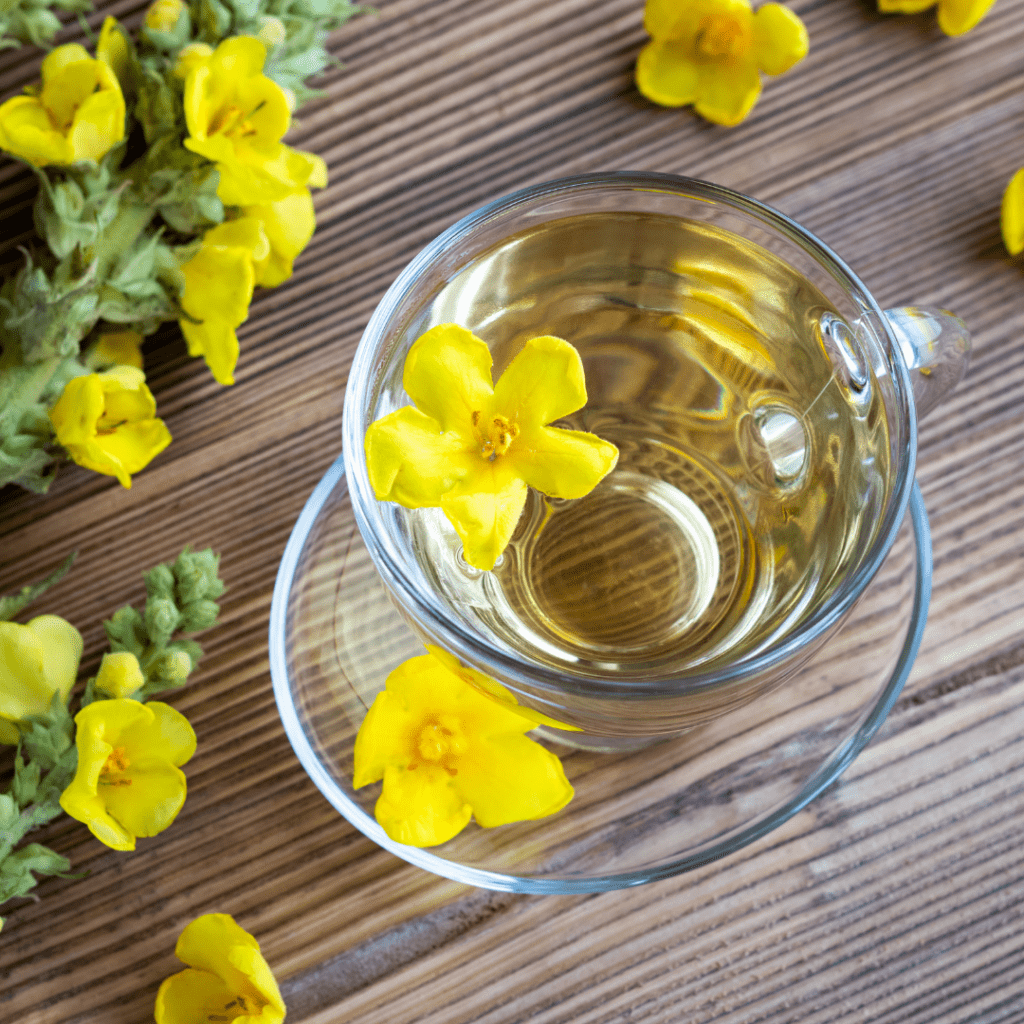
Uses
Although mullein is technically edible, it’s mostly used medicinally. The leaves and flowers can be harvested and dried for use in remedies.
Leaves can be harvested by hand at any time, preferably in the late spring or early summer when in bloom. For the largest crop, harvest leaves in the fall of the first year or the spring of the second year, because quality deteriorates after that.
Fresh mullein leaves are covered in tiny hairs that can irritate the throat, therefore most people use it in a dried form.
Harvest your leaves and flowers and dry in a warm room away from sunlight. Drying screens work well.
Store dried mullein in a glass jars, keeping in a cool, dark cabinet until needed.
Tea: Mullein tea has always been famous! The oldest known way to consume the benefits of this herb. Drink alone or add to a delicious herb tea mix!
Ingredients:
• 1-2 teaspoons dried mullein
• 1 cup boiling water
Add your herbs to a cup or tea ball strainer and pour your boiling water over them. Steep 10 minutes, strain and enjoy!
Mullein tea can be consumed 3 times a day, and up to 6 during times of illness. To learn more about making herbal teas visit our blog post here.
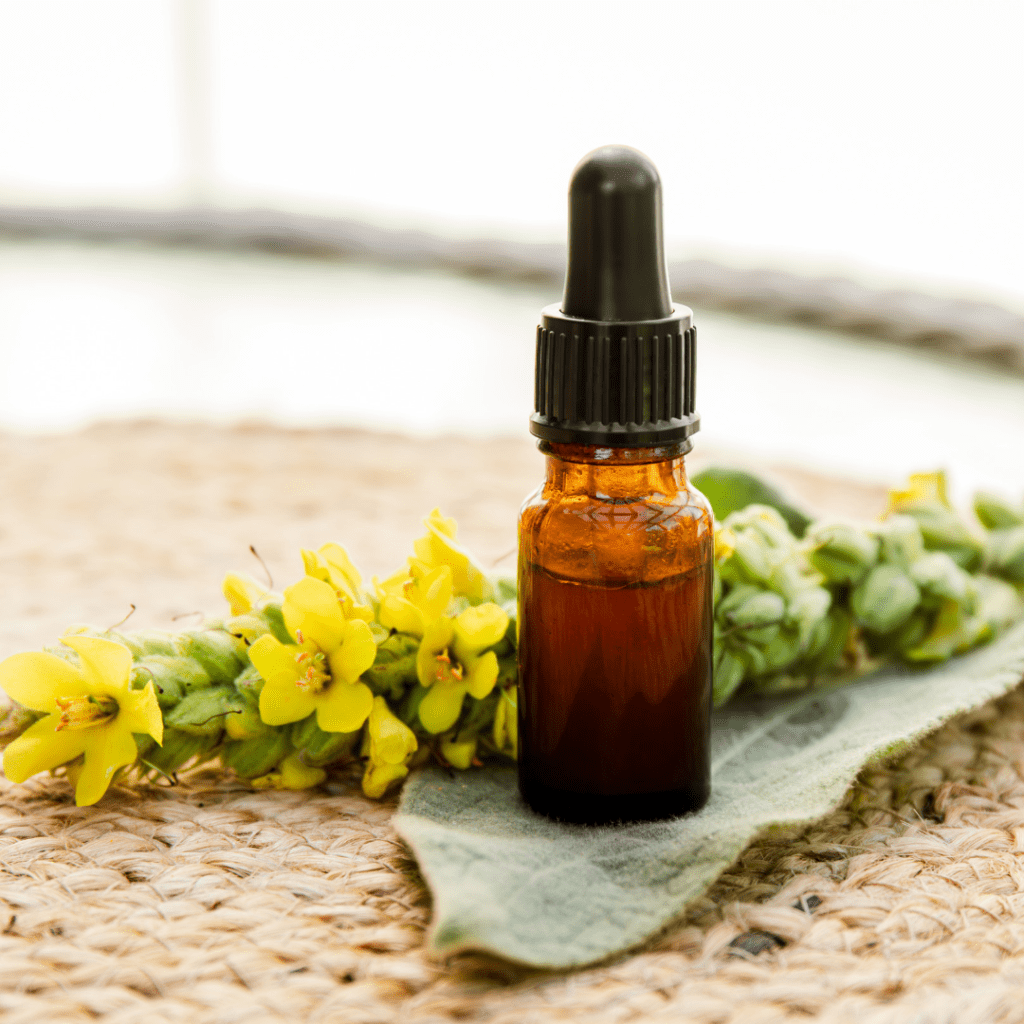
Tincture: Tinctures are the most popular form of herbal medicine used today. This is due to the fact that they are quick, efficient and just as effective as a tea. Dried mullein is infused in alcohol for a time duration, which extracts the medicinal compounds from the herb into the liquid. If you’re interested in learning how to make your own tinctures, visit our blog post How to make a Tincture.
Salve: Mullein can easily be made into a salve for skin issues. Salves are easy to make and don’t require any special equipment. View How to make Herbal Salves and learn how!
Ear Oil: Mullein oil is a popular remedy for ear infections. Simply infuse 3- 4 tablespoons of dried mullein leaves and flowers, in 1/2 cup olive oil, using a double boiler, heating on extra low heat for 15- 20 minutes. Or, go the old fashion way; filling a mason jar full of dried mullein leaves, flowers and oil, and slowly infusing over a course of a few weeks.
Strain well, making sure not to leave any particles of herb in the oil. Fill an eyedropper full of oil and administer to the ear, rubbing the lobe as you do. Turn the patient over and administer a few drops in the other ear. This is important as infections will move from one year to another.
Repeat Every hour until the pain subsides.
Do not use this oil on infections caused by water such as swimmer’s ear.
For an extremely effective remedy, follow our instructions on Making a Garlic Ear Oil, using mullein oil.
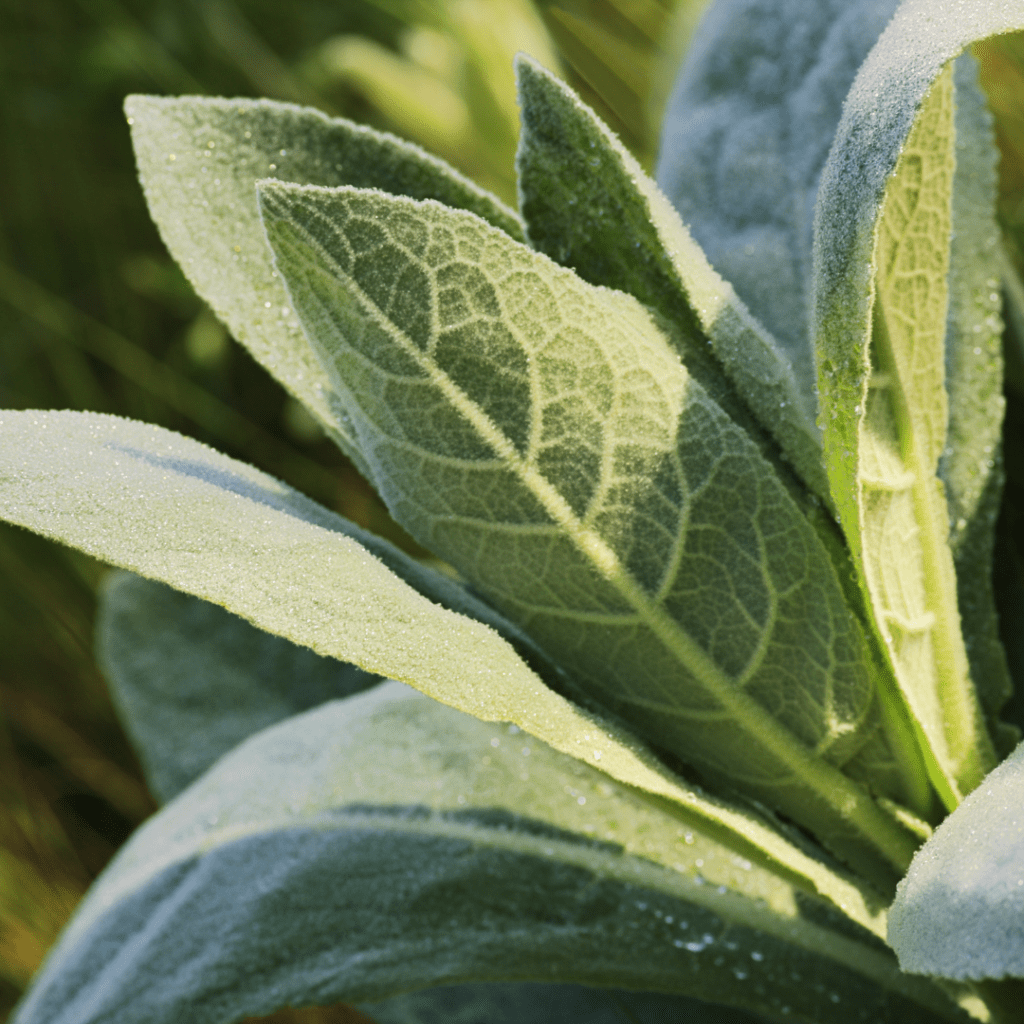
Safety Considerations
Mullein plant does not have any documented potential risks to humans. The few reactions that may occur in some users are not fatal. Studies do not show any side effects on pregnant women as well. However, anecdotal evidence suggests expectant mothers should avoid prolonged use of any compound that contains mullein. Other potential adverse effects mullein may cause include the following:
Skin Irritation: Some individuals have reported skin irritation after using mullein extracts in tea and other forms. Avoiding the extract may cure the skin irritation in such people.
Breathing Issues: Mullein leaves are fluffy and hairy. If they get stuck in the throat, they may cause breathing issues. This usually happens when you make the tea and do not strain the mixture well. In some isolated cases, people taking the tea have reported difficulty inhaling and inflammation of their chest walls. However, medical intervention is not required in most instances.
As with most herbs, it is possible that they could interact with certain medications. If you are pregnant, nursing or taking medications, speak to your doctor before starting any herbal therapies. View our disclaimer here
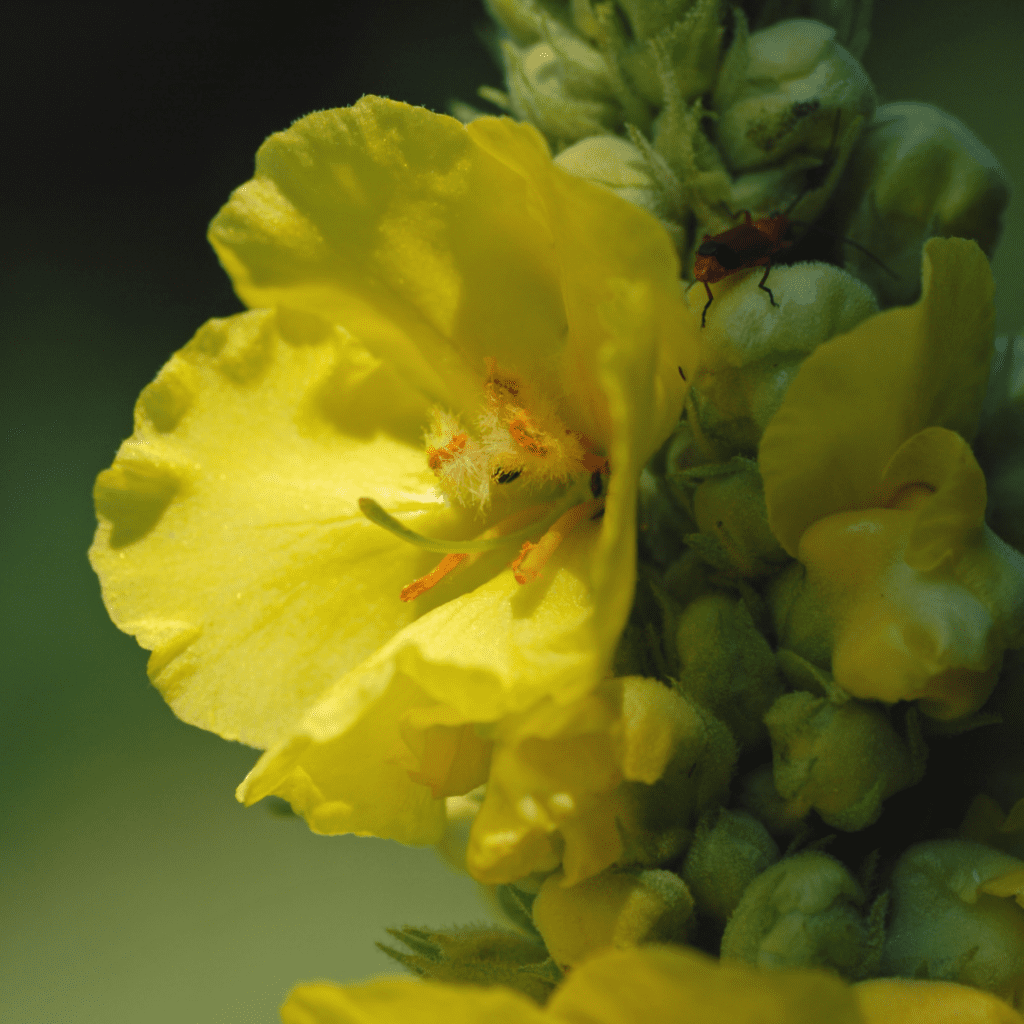
Final Thought
Herbs with reputations such as mullein have been well earned. This amazing plant has been helping and healing humans for generations, and is continuing to do so well into the modern age. The next time you see this large amazing plant, look at it in a different light, one that might just benefit your life.
Stay Wild

Kayce Heister
Kayce is a Clinical Herbalist, Naturopathic Practitioner (HHP), Active Forager, Wild Food Chef and Mother of three. She has spent the last 20 years practicing herbalism and natural health, and spends most of her time educating others on the amazing potential the natural world can offer.
Sources below
https://www.ncbi.nlm.nih.gov/pmc/articles/PMC3350428/
https://www.ncbi.nlm.nih.gov/pmc/articles/PMC5010591/
https://www.ncbi.nlm.nih.gov/pmc/articles/PMC2781767/